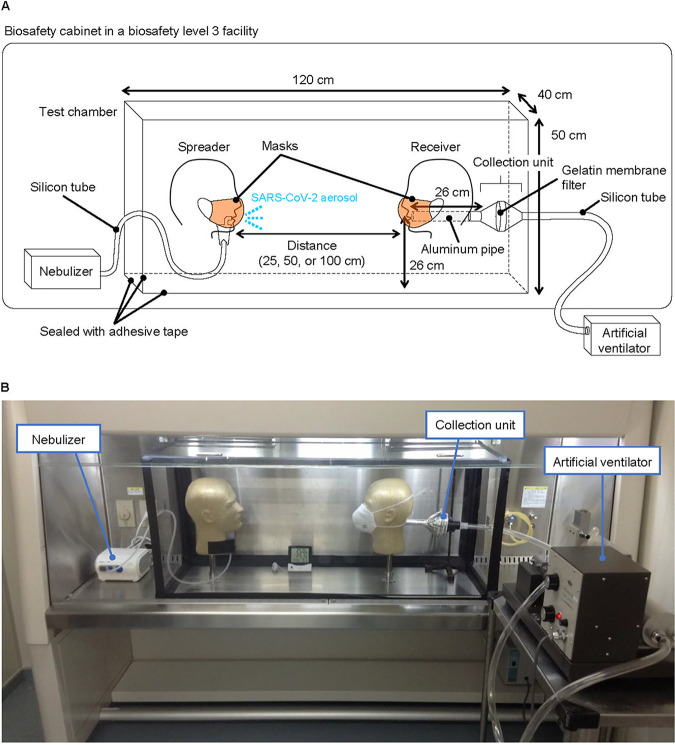FIG 1.
Simulation system for airborne transmission of virus droplets/aerosols. Schematic image (A) and a photograph (B) of the system. A test chamber for airborne transmission experiments was constructed in a BSL3 facility, and two mannequin heads were placed facing each other. One mannequin head was connected to a customized compressor nebulizer and exhaled a mist of virus suspension through its mouth to mimic a viral spreader. The other mannequin head was connected to an artificial ventilator through a virus particle collection unit. Tidal breathing, conducted by the artificial ventilator, was set to a lung ventilation rate representative of a steady state in adults (i.e., 0.5 liter of tidal volume, a respiratory rate of 18 breaths/min, and a 50% gas exchange rate). Face masks were attached to the mannequin heads according to each manufacturer’s instructions.

